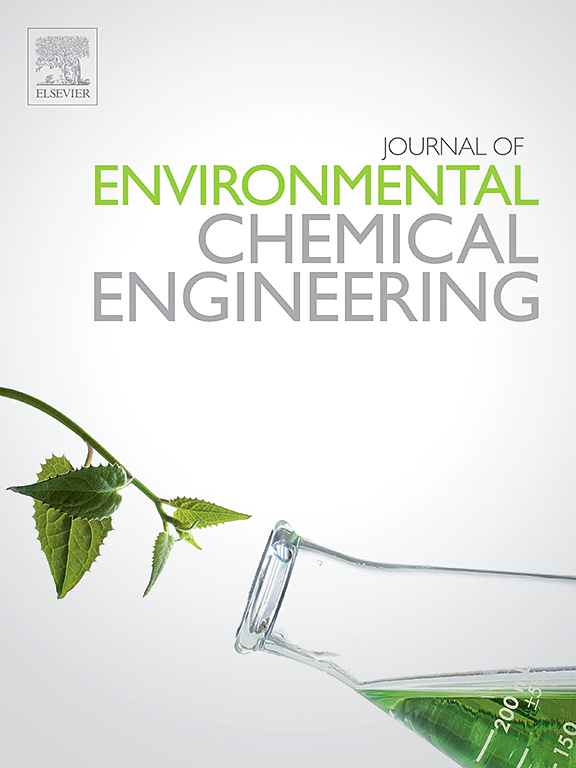Three-dimensionally electrochemical oxidation technology: Current advances, challenges, and prospects for wastewater treatment
IF 7.4
2区 工程技术
Q1 ENGINEERING, CHEMICAL
引用次数: 0
Abstract
Three-dimensionally (3D) electrochemical oxidation technology has emerged as a groundbreaking advancement in electrochemical advanced oxidation processes (EAOPs), since the particle electrodes can enlarge the active sites for the generation of free radicals and expedite the mass transfer of pollutants within 3D reactor. However, several aspects of the 3D electrochemical system require further refinement, including the development and fabrication of affordable particle electrodes with high efficiency and stable performance, the rational design of 3D electrochemical reactor layout, and the optimization of processing parameter models. Herein, it presents a comprehensive and critical review on the evolution and application of 3D electrochemical systems, encompassing the characteristics of 3D electrochemical process, reactor configuration, kinetics of pollutant removal at varying primary operating parameters, underlying mechanisms, and approaches for regeneration of electrodes. We highlight the current challenges and issues encountered within this technology, particularly the contentious mechanisms surrounding the electrocatalytic performance of particle electrodes in pollutant degradation, which could potentially confound the development of 3D electrochemical technology towards industrial applications. Accordingly, we systematically describe relevant suggestions and potentially effective strategies, and offer perspectives on the application of 3D electrochemical technology in wastewater treatment. This review paper is expected to underpin the understanding and development of the 3D electrochemical oxidation technology for EAOPs in wastewater treatment.
三维电化学氧化技术:废水处理的进展、挑战和前景
三维(3D)电化学氧化技术是电化学高级氧化过程(EAOPs)的突破性进展,因为颗粒电极可以扩大自由基生成的活性位点,加快污染物在3D反应器内的传质。然而,三维电化学系统的几个方面需要进一步完善,包括开发和制造经济实惠的高效稳定的颗粒电极,合理设计三维电化学反应器布局,以及优化加工参数模型。本文对三维电化学系统的发展和应用进行了全面而批判性的回顾,包括三维电化学过程的特征、反应器配置、不同主要操作参数下污染物去除动力学、潜在机制和电极再生方法。我们强调了该技术目前面临的挑战和问题,特别是围绕颗粒电极在污染物降解中的电催化性能的有争议的机制,这可能会混淆3D电化学技术向工业应用的发展。因此,我们系统地描述了相关建议和可能有效的策略,并对三维电化学技术在废水处理中的应用提出了展望。本文的研究成果将为电化学氧化技术在废水处理中的应用奠定基础。
本文章由计算机程序翻译,如有差异,请以英文原文为准。
求助全文
约1分钟内获得全文
求助全文
来源期刊

Journal of Environmental Chemical Engineering
Environmental Science-Pollution
CiteScore
11.40
自引率
6.50%
发文量
2017
审稿时长
27 days
期刊介绍:
The Journal of Environmental Chemical Engineering (JECE) serves as a platform for the dissemination of original and innovative research focusing on the advancement of environmentally-friendly, sustainable technologies. JECE emphasizes the transition towards a carbon-neutral circular economy and a self-sufficient bio-based economy. Topics covered include soil, water, wastewater, and air decontamination; pollution monitoring, prevention, and control; advanced analytics, sensors, impact and risk assessment methodologies in environmental chemical engineering; resource recovery (water, nutrients, materials, energy); industrial ecology; valorization of waste streams; waste management (including e-waste); climate-water-energy-food nexus; novel materials for environmental, chemical, and energy applications; sustainability and environmental safety; water digitalization, water data science, and machine learning; process integration and intensification; recent developments in green chemistry for synthesis, catalysis, and energy; and original research on contaminants of emerging concern, persistent chemicals, and priority substances, including microplastics, nanoplastics, nanomaterials, micropollutants, antimicrobial resistance genes, and emerging pathogens (viruses, bacteria, parasites) of environmental significance.
 求助内容:
求助内容: 应助结果提醒方式:
应助结果提醒方式:


